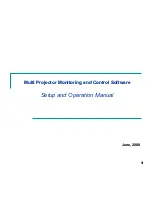
Chapter 1
Designing Using LDSII
LDSII Programming Guide - 880015-0123
9
conjunction with media containing a blowhole. The blowhole and die-cut selections differ on
how they detect an out of stock condition. See also ^D636)n command.
0
None
(gap sensors are disabled)
1
Blackline
(lower gap sensor is enabled)
2
Die-cut
(upper and lower gap sensors are enabled)
3
Blowhole
(upper and lower gap sensors are enabled)
1.4.7 OFX (Offset X Direction)
LSX, LSY, GAP, DRM, SPD, DET,
OFX
, OFY
This parameter moves or offsets all fields in the “X” direction without altering the field’s
insertion points. The value is entered using the current unit of measure selected by the
“^D564)” command. See also ^D637)n command.
1.4.8 OFY (Offset Y Direction)
LSX, LSY, GAP, DRM, SPD, DET, OFX,
OFY
This parameter
moves or offsets all fields in the “Y” direction without altering the field’s
insertion points. The value is entered using the current unit of measure selected by the
“^D564)” command. See also ^D638)n command.
1.5
Format Entry Command - ^Fn)
The
Format Entry
command is used to define the characteristics, placement and
representation of the corresponding text data of the individual fields. This command starts
with the “^Fn)” structure which is then followed by thirteen different parameters that define
and control the desired field. The “n” is an identifier that represents the field number being
formatted and corresponds to the equivalent “^Tn)” line. As with the ^Dxxx commands,
multiple parameters
must be separated by the comma (“,”) delimiter. The format entry
command can be issued from outside a script but is typically created within a script file.
Unlike the “^Dxx)” commands and the script header, the Format Entry Command typically
does contain default values as there are no equivalent commands for the individual
parameters. The default values are discussed under the individual parameter descriptions.
Figure 4
Format Entry Command
^Fn) XB, YB, CI, SW, SH, AI, DN, FO, FJ, FW, CS, FC, CC
The comma delimiter
The “n” identifies the field
number which always
starts at “1” and not “0”.
Field parameters
Summary of Contents for LDS II
Page 2: ...This Page Intentionally Left Blank...
Page 3: ...This Page Intentionally Left Blank...
Page 14: ...x LDSII Programming Guide 880015 0123...
Page 18: ...2 LDSII Programming Guide 880015 0123...
Page 72: ...56 LDSII Programming Guide 880015 0123...
Page 92: ...76 LDSII Programming Guide 880015 0123...
Page 108: ...92 LDSII Programming Guide 880015 0123...
Page 112: ...96 LDSII Programming Guide 880015 0123...
Page 116: ...100 LDSII Programming Guide 880015 0123...
Page 119: ...LDSII Programming Guide 880015 0123 103 User Notes...
Page 120: ......
Page 121: ......
















































